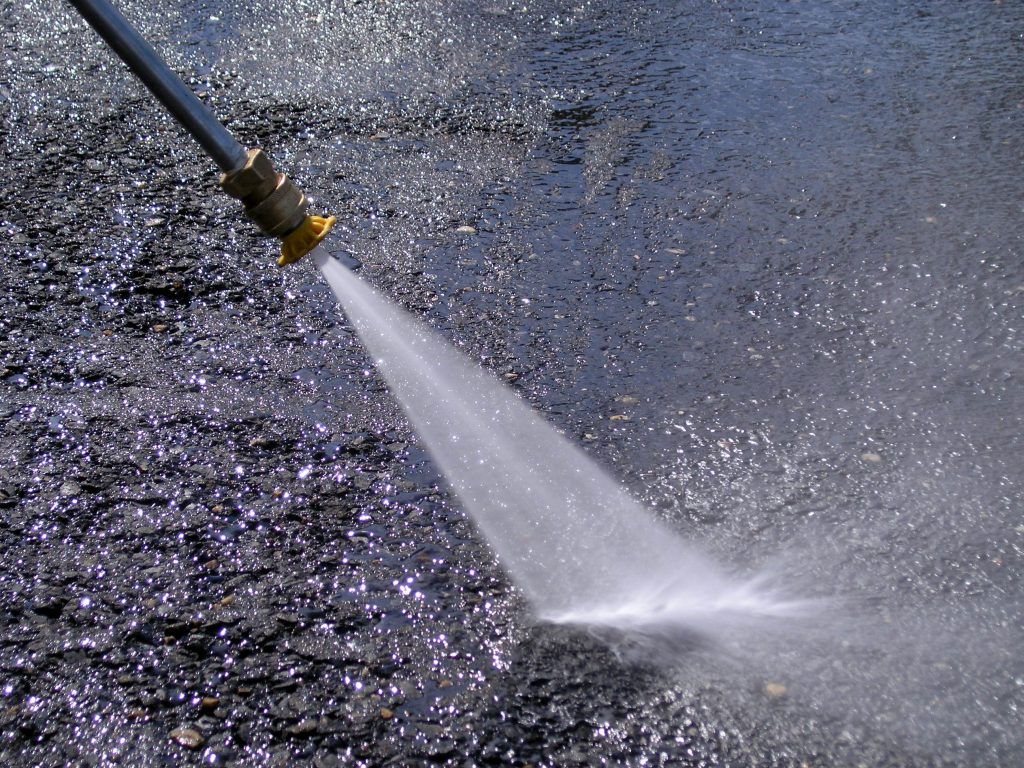Maintaining your home’s curb appeal is not just about aesthetics—it is about safeguarding your property’s long-term value, enhancing your quality of life, and making a lasting first impression. Pressure washing has emerged as one of the most effective, efficient, and environmentally friendly methods for cleaning various surfaces around the home. By using high-powered water jets, pressure washing can instantly restore the appearance of exterior surfaces, making your home look fresh and inviting. This essential guide will explore everything you need to know about using pressure washing to boost your home’s curb appeal, from understanding the technology behind it to mastering specific techniques for different surfaces.

Understanding Curb Appeal and Its Importance
Curb appeal refers to how attractive your property appears from the street. It encompasses the cleanliness, maintenance, and overall aesthetic of the exterior of your home, including your yard, driveway, siding, roof, and other visible features. First impressions are important—whether you’re trying to sell your home, making a positive statement in your neighborhood, or simply maintaining a space that reflects your style.
Key Reasons Curb Appeal Matters
- Increase in Property Value: Homes with excellent curb appeal typically command higher prices. Whether you’re planning to sell or simply want to protect your investment, well-maintained exteriors can increase a home’s market value.
- Faster Sales Process: Homes with great curb appeal often sell more quickly. Potential buyers make snap decisions based on their initial impression of the house, and a clean exterior creates a positive feeling about the home.
- Improved Neighborhood Aesthetics: A home with great curb appeal contributes to the overall beauty of the neighborhood, creating a more inviting and well-kept environment.
- Pride of Ownership: Keeping your home looking its best can increase your satisfaction with your property and provide a sense of pride in your home.
Pressure Washing: The Game-Changer for Your Home’s Exterior
Pressure washing is an effective cleaning technique that uses high-pressure water to remove dirt, grime, mold, mildew, algae, and other debris from surfaces. This process can be used on a variety of exterior elements to improve their appearance and ensure they remain in good condition over time. Whether you are preparing your home for sale or just want to maintain its appearance, pressure washing is an essential tool for homeowners looking to improve their curb appeal.
How Pressure Washing Works
Pressure washing uses a powerful jet of water at high speed to break down and remove dirt and contaminants from surfaces. The water is typically delivered through a nozzle at varying pressure levels, making it effective for cleaning delicate surfaces or heavy-duty jobs like driveways.
- Pressure: Measured in PSI (pounds per square inch), the pressure determines how forcefully the water is expelled. Different surfaces require different pressure settings to avoid damage.
- Flow Rate: Measured in GPM (gallons per minute), this refers to the amount of water the machine can push through the nozzle in one minute. Higher flow rates are used for larger areas, such as driveways and patios.
- Temperature: Some pressure washers use hot water to enhance the cleaning power, especially for tough stains like oil or grease.
Benefits of Pressure Washing
- Efficiency: Pressure washing is faster than scrubbing by hand and can clean large areas in a fraction of the time.
- Environmental Friendliness: Many pressure washing services use eco-friendly, biodegradable detergents, making it a sustainable method of cleaning.
- Restoration of Surfaces: Regular pressure washing can help maintain surfaces by removing contaminants that could cause long-term damage. For example, mold or mildew can erode siding, wood decks, and fences if not properly cleaned.
- Cost-Effective: By maintaining your exterior surfaces, pressure washing can save you money in the long run by preventing the need for costly repairs or replacements.
Common Surfaces to Pressure Wash
Pressure washing can be used on almost any exterior surface. Below, we will discuss the most common surfaces around the home that benefit from this cleaning method.
a. Driveways and Walkways
Driveways, sidewalks, and other concrete or stone surfaces can accumulate dirt, oil stains, mold, and mildew. Over time, these contaminants can degrade the appearance of the surface and may even cause long-term damage.
- Challenges: Oil stains, moss, and mildew can be difficult to remove without the right equipment.
- Pressure Washing Benefits: Pressure washing can remove the toughest stains and restore the surface’s original look. It is also efficient for cleaning larger areas.
Best Practices for Pressure Washing Driveways: Use a pressure washer with a PSI of around 3,000-4,000 for concrete surfaces. For stubborn stains, pre-treatment with a degreaser or detergent can help break down grease and oil.
b. Decks and Patios
Decks, whether made from wood or composite materials, often accumulate dirt, algae, and mold. The harsh Florida sun and humidity can also cause decks to fade over time.
- Challenges: Wood surfaces, in particular, are vulnerable to splintering and damage from high-pressure washing.
- Pressure Washing Benefits: A soft pressure wash can restore the look of your deck by removing dirt and mold. For wood decks, a gentle, low-pressure setting should be used to avoid causing damage.
Best Practices for Pressure Washing Decks: Use a lower PSI (around 1,200-1,500 for wood) and a fan spray nozzle to avoid damaging the wood. It’s important to follow the grain of the wood when pressure washing.
c. Siding (Vinyl, Wood, Stucco)
Vinyl, wood, and stucco siding are common in many homes, but they are also prone to mold, mildew, and dirt accumulation. Over time, these contaminants can make the siding look dirty and faded.
- Challenges: Vinyl and stucco siding are more delicate and can be damaged by high-pressure washing.
- Pressure Washing Benefits: Pressure washing can restore the brightness of siding by cleaning away dirt, mold, and algae. It can also remove spider webs, dust, and grime, creating a cleaner, fresher exterior.
Best Practices for Pressure Washing Siding: Use a medium-pressure setting (1,500-2,500 PSI) for vinyl siding and be cautious not to direct water under the siding. For wood or stucco, a soft wash technique with a lower PSI is essential to avoid damage.
d. Roof Cleaning
A clean roof can make a huge difference in the appearance of your home, but roof cleaning is a tricky task. Pressure washing is a great way to remove debris, moss, and algae from your roof without causing significant damage.
- Challenges: High-pressure washing can dislodge shingles and cause leaks if not done correctly.
- Pressure Washing Benefits: Low-pressure or soft washing methods can safely clean roof tiles without damaging them. It’s ideal for removing organic growth like moss, algae, or lichen, which can deteriorate the roof material over time.
Best Practices for Pressure Washing Roofs: Use a low-pressure setting (around 1,200 PSI) and avoid spraying directly at the roof’s edges or under shingles. For safety, it’s best to hire a professional to clean your roof.
e. Fences
Wood, vinyl, and metal fences often accumulate dirt, algae, and mildew. Regular pressure washing can restore their appearance and help extend their lifespan.
- Challenges: Wood fences can easily splinter, and vinyl can crack if the pressure is too high.
- Pressure Washing Benefits: Pressure washing can remove stubborn stains, mildew, and debris without causing damage if done correctly.
Best Practices for Pressure Washing Fences: For wood fences, use a low-pressure setting (around 1,200 PSI) and follow the grain of the wood. Vinyl fences should be cleaned with medium pressure to avoid cracking.
Key Considerations Before Pressure Washing
While pressure washing is an excellent tool for boosting curb appeal, there are several considerations homeowners need to keep in mind to avoid damaging surfaces or causing safety hazards.
a. Safety First
Pressure washers are powerful machines, and improper use can lead to personal injury or property damage. Always wear protective gear, including goggles, gloves, and sturdy footwear. Additionally, make sure you follow the manufacturer’s guidelines for each piece of equipment.
b. Proper Pressure Settings
As discussed, different surfaces require different pressure settings. High pressure can damage soft materials like wood or stucco, while too low of pressure may not remove tough stains. It’s important to use the appropriate PSI for each type of surface.
c. Choosing the Right Cleaning Solution
Many pressure washing services use environmentally friendly cleaning solutions, especially for stubborn stains like grease or mold. Ensure the detergent you choose is safe for your plants and pets if you’re cleaning near landscaping.
d. Water Conservation
Pressure washing uses a significant amount of water, so be mindful of your water usage, especially during dry periods. Many modern pressure washers are designed to be more water-efficient.
e. Hiring Professionals vs. DIY
For homeowners who are not comfortable using a pressure washer, hiring a professional service is often the best option. Professionals are trained to use the right pressure settings and equipment, ensuring safe and effective cleaning.
Conclusion: Maximizing Curb Appeal with Pressure Washing
Pressure washing is an invaluable tool for homeowners looking to maintain or enhance their home’s curb appeal. By investing in regular pressure washing, you not only improve the appearance of your home but also protect your property from long-term damage caused by dirt, mold, mildew, and other contaminants. Whether you’re cleaning your driveway, deck, roof, or siding








